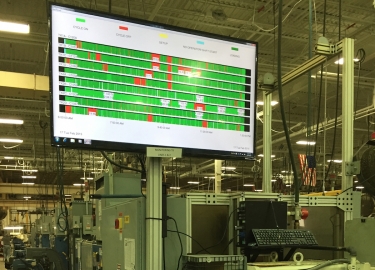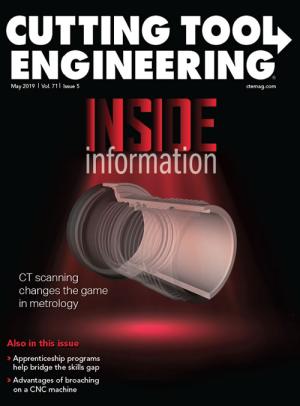As I sit to write an article about a single aspect of smart manufacturing, one particular detail has been sticking out lately in my brain because I find myself constantly repeating a phrase while at machine monitoring installations. It’s the answer to the question I’m asked by every new customer. The question is some form of “What’s the easiest way to make sure that this machine monitoring system will work for us?” My answer is consistently the same three words: “Visibility and accountability.” This reply comes from installing machine monitoring systems on several thousand machines over the past 20 years. Yes, it sounds so simple, but visibility and accountability are the secret to success with machine monitoring.
I’ll start with visibility because it is logical and so easy to accomplish. The beauty of an effective machine monitoring system is that it can provide not only real-time data about machine utilization but historical data for machine performance as well. The easiest way to put this data to work is with live machine monitoring dashboards on large-screen monitors right on the shop floor. The reason to do this is where the logic kicks in. As all machinists would then understand that there is live, companywide visibility into their machines’ performance, they will logically—maybe even subconsciously—reduce downtime and run more cycles.

An effective machine monitoring system provides live data about machine utilization and historical data about machine performance. Image courtesy of eNetDNC & Machine Monitoring
Customers who display these dashboards on their shop floors routinely tell me they see an immediate 10 percent increase in machine efficiency. If a company purchases a higher-end monitoring system that forces operators to report reasons for downtime, that also brings increased visibility and is good for at least another 10 percent increase in machine efficiency. Again, logic dictates that no operator wants to have 10 reported reasons for downtime during a shift when every co-worker has only two. Operators naturally stay closer to their machines and run more cycles because everyone at the company can see the live machine utilization data. Visibility is the easiest part of the machine monitoring puzzle to put into place and offers the quickest return on investment.
My other focus today is perhaps the biggest must-have for a successful machine monitoring implementation: accountability. It is needed both on the shop floor and in the manufacturing manager’s office. I tell all my customers they should appoint an internal lead person and a backup lead person for the machine monitoring system. These leaders need to be accountable as the internal go-to resource when questions or needs arise with the monitoring system. These are the people who obviously should receive the most training on the system at the outset and be the only ones with access to the monitoring software. It works best when the lead people can communicate easily with both colleagues and the vendor and have a decent understanding of computers. If a company takes the approach of “We’ll figure it out as a group,” that is a surefire recipe for failure.
The second part of the accountability requirement is something that I touched on previously in its relation to visibility: the need to hold operators accountable for their usage of available machine uptime. The data from when a machine runs cycles is clearly valuable, but the data from when a machine does not run can be just as valuable. The ability of a machine monitoring system to force operators to enter reasons for machine downtime is key because the data from voluntary reporting of reasons for downtime is sporadic and unreliable. The equation is simple: Forced reporting of reasons for machine downtime equals less machine downtime.
Analyzing data from downtime can be eye-opening for shop management. For example, an increase in downtime to wait for first-piece inspection may justify adding a QC inspector so a manufacturer can turn that downtime into machine uptime. It’s much more economical to increase machine uptime by addressing reasons for downtime than it is to buy a machine tool.
Both aspects of accountability are equally important and necessary for a successful machine monitoring implementation. I really hope you have an opportunity to put my advice to the test and start reaping the benefits of this smart manufacturing revolution. I think we all can agree it’s an exciting time to be in manufacturing.


